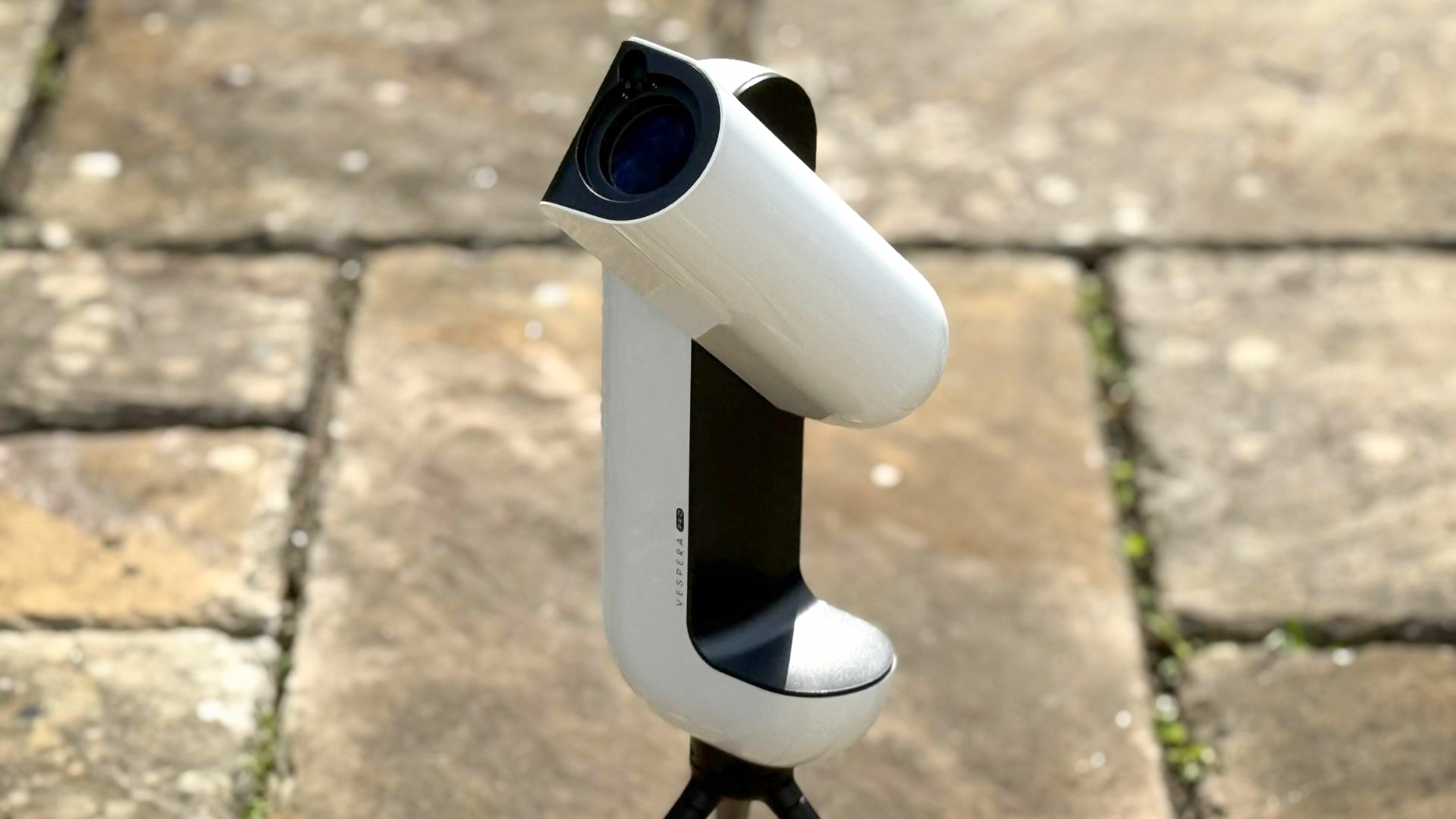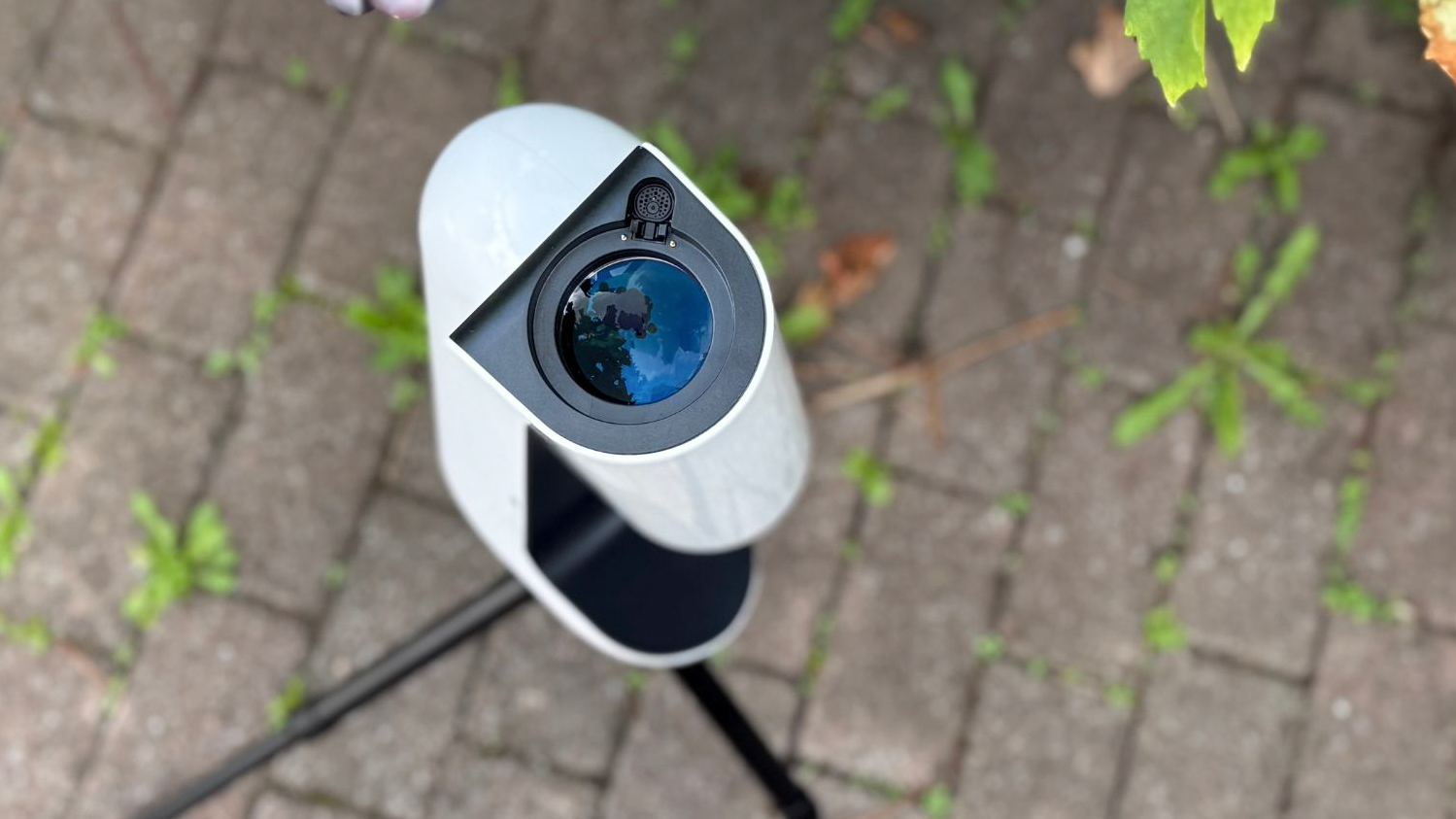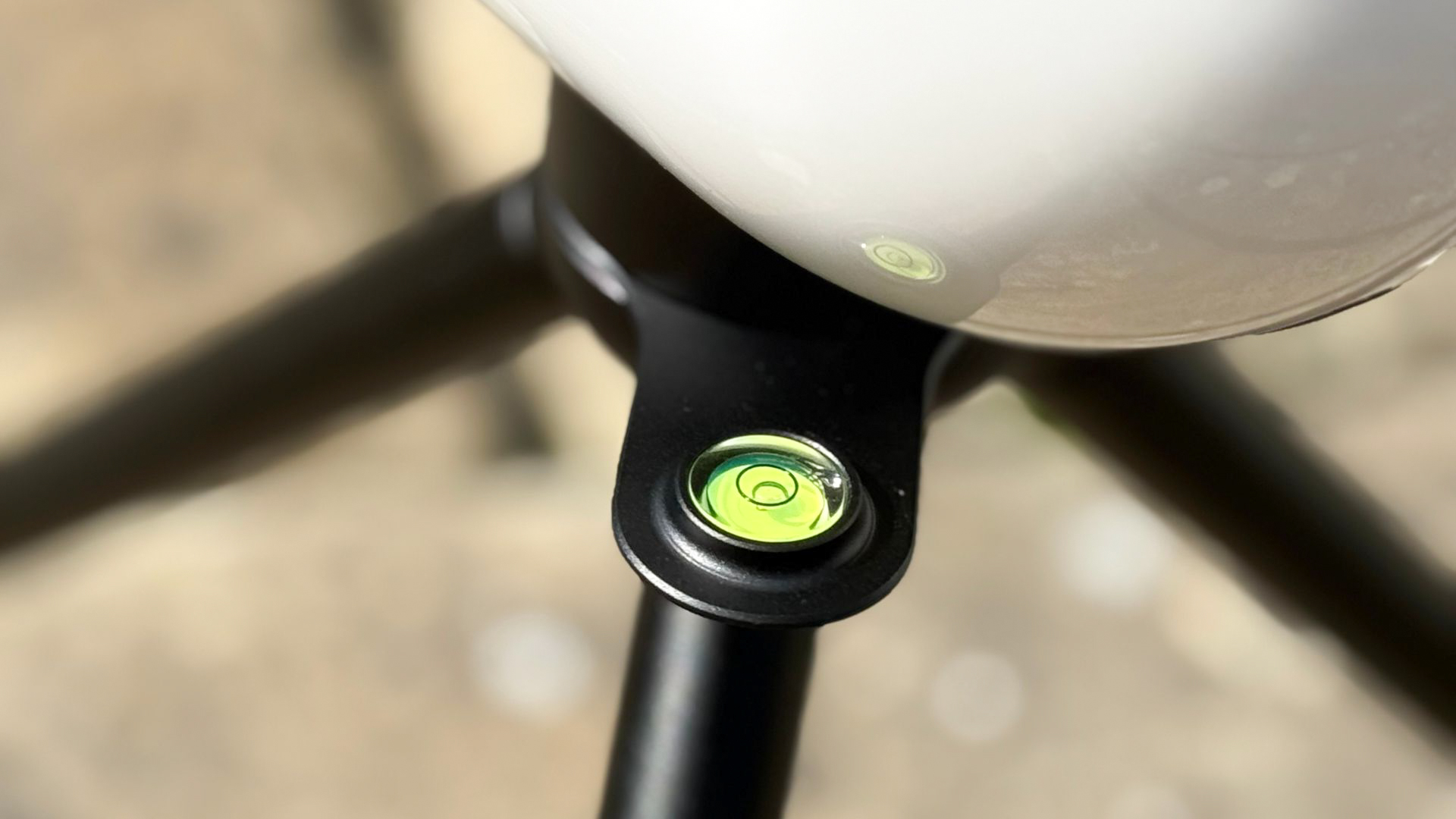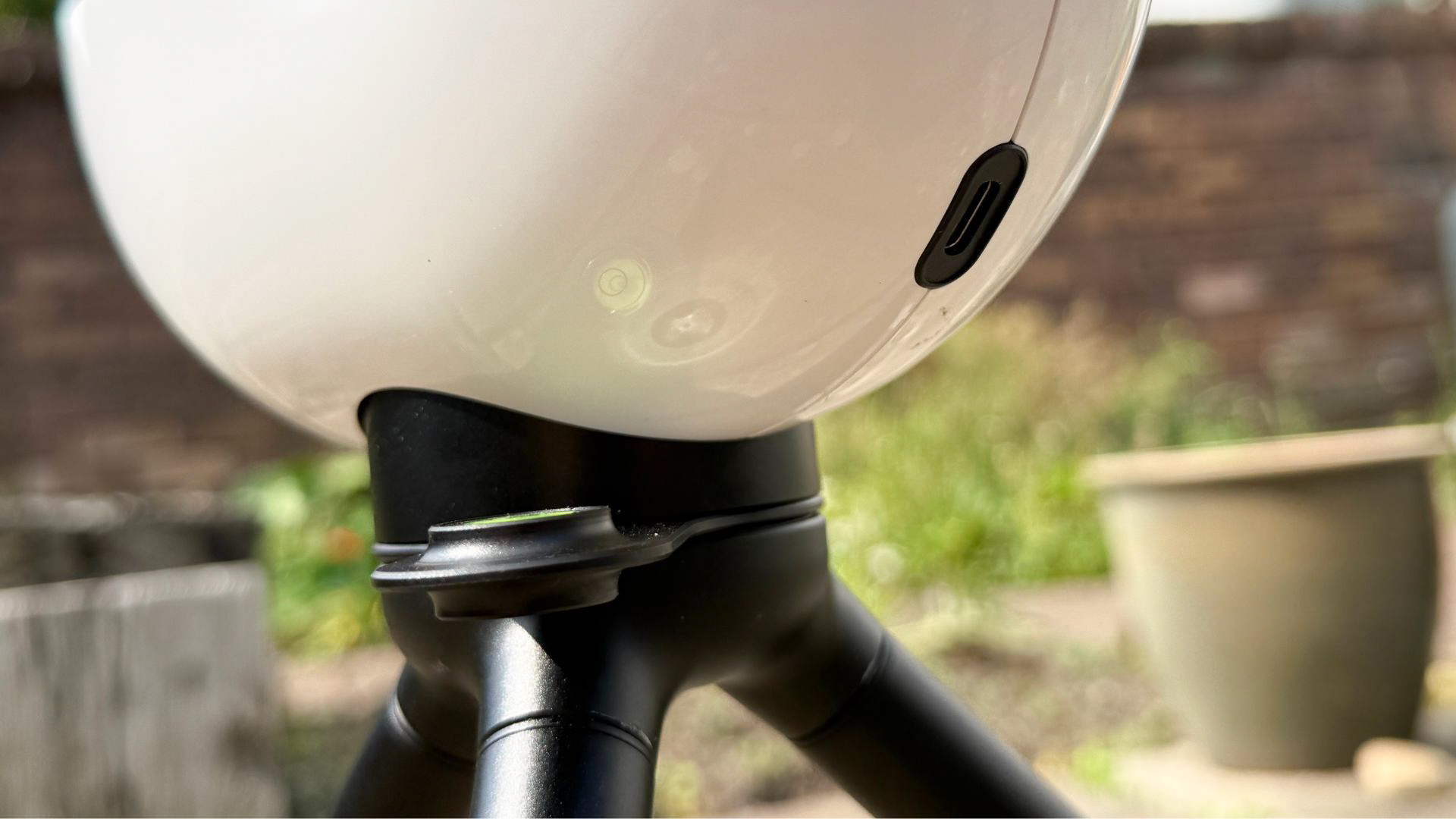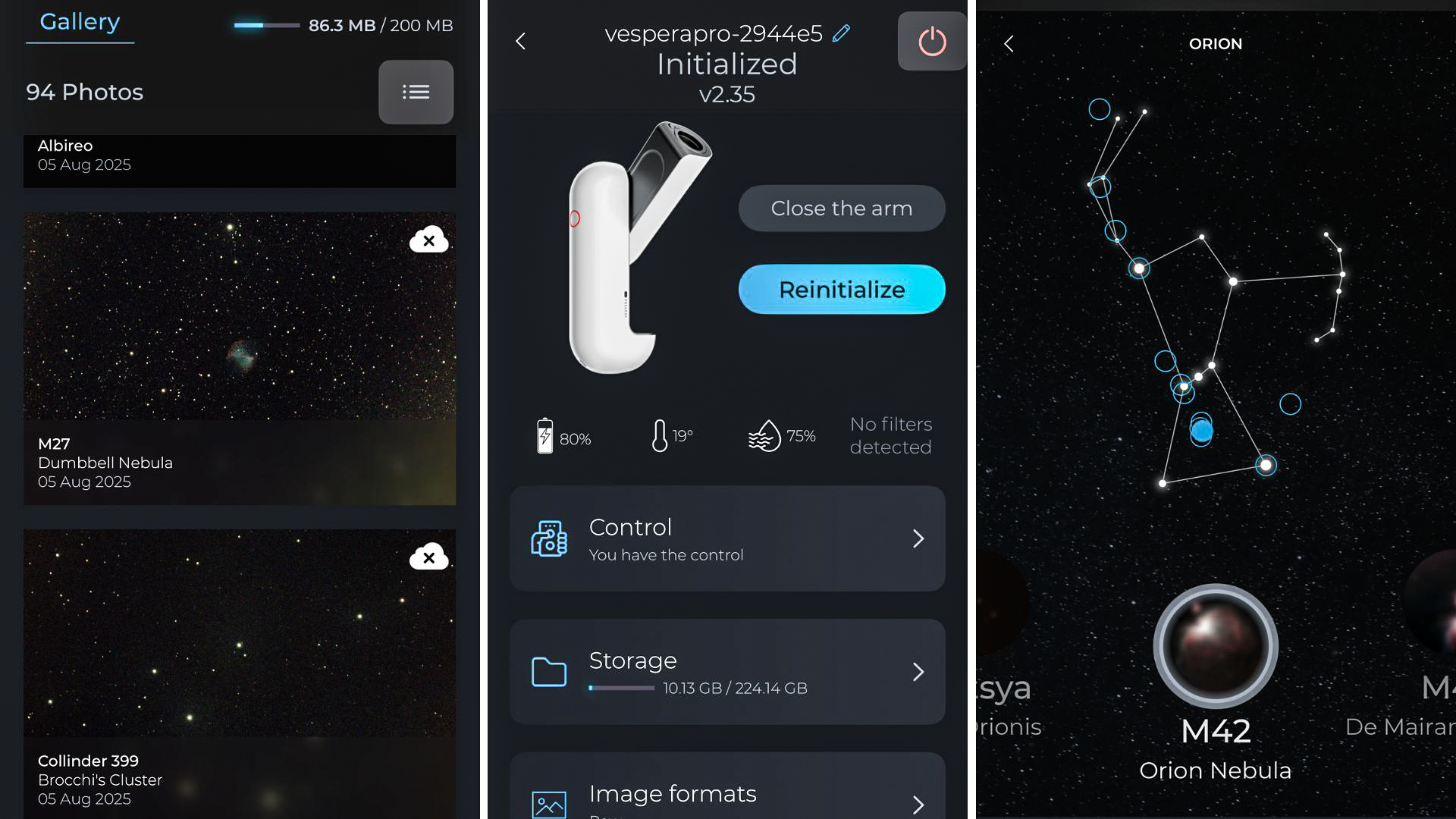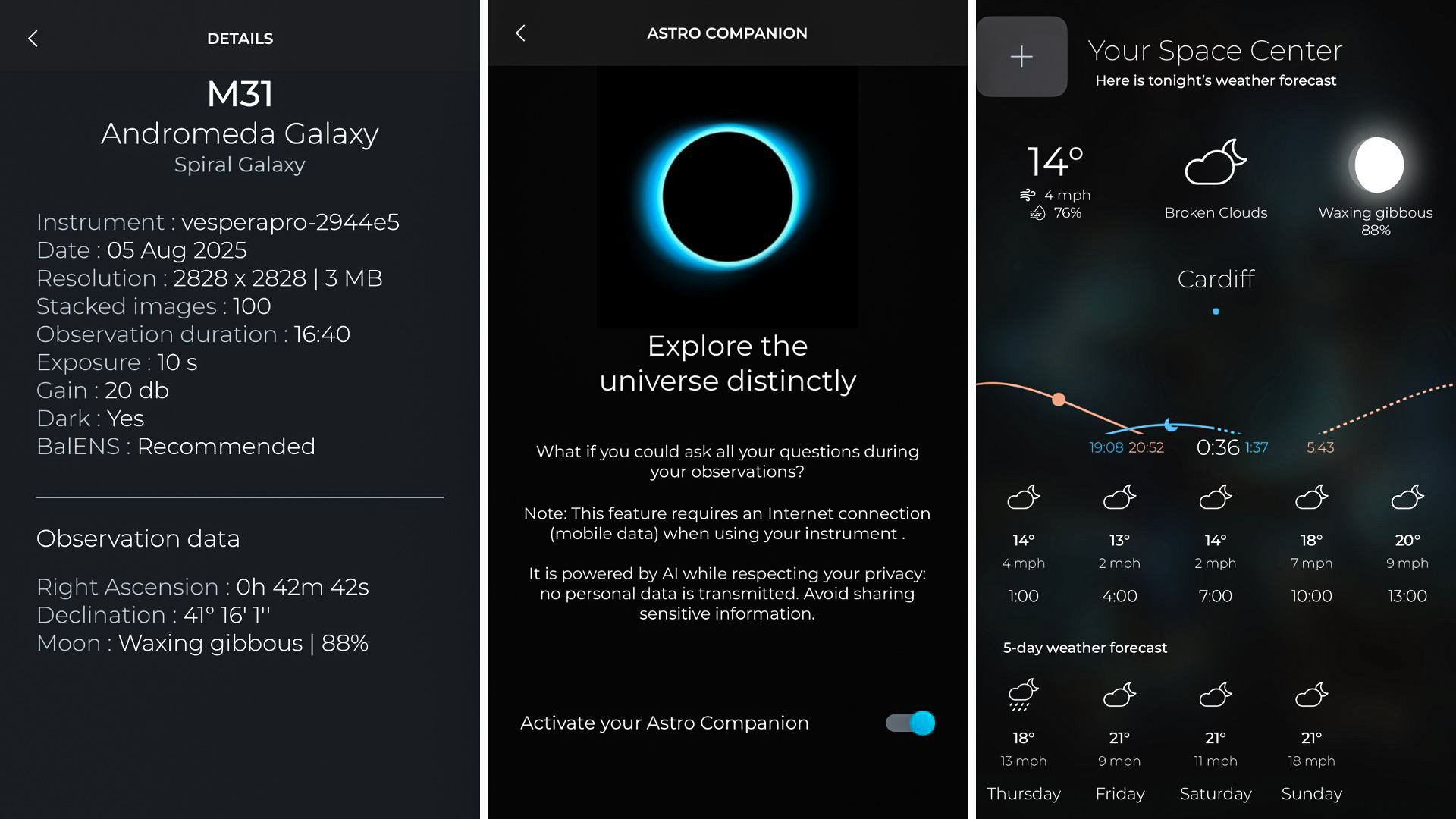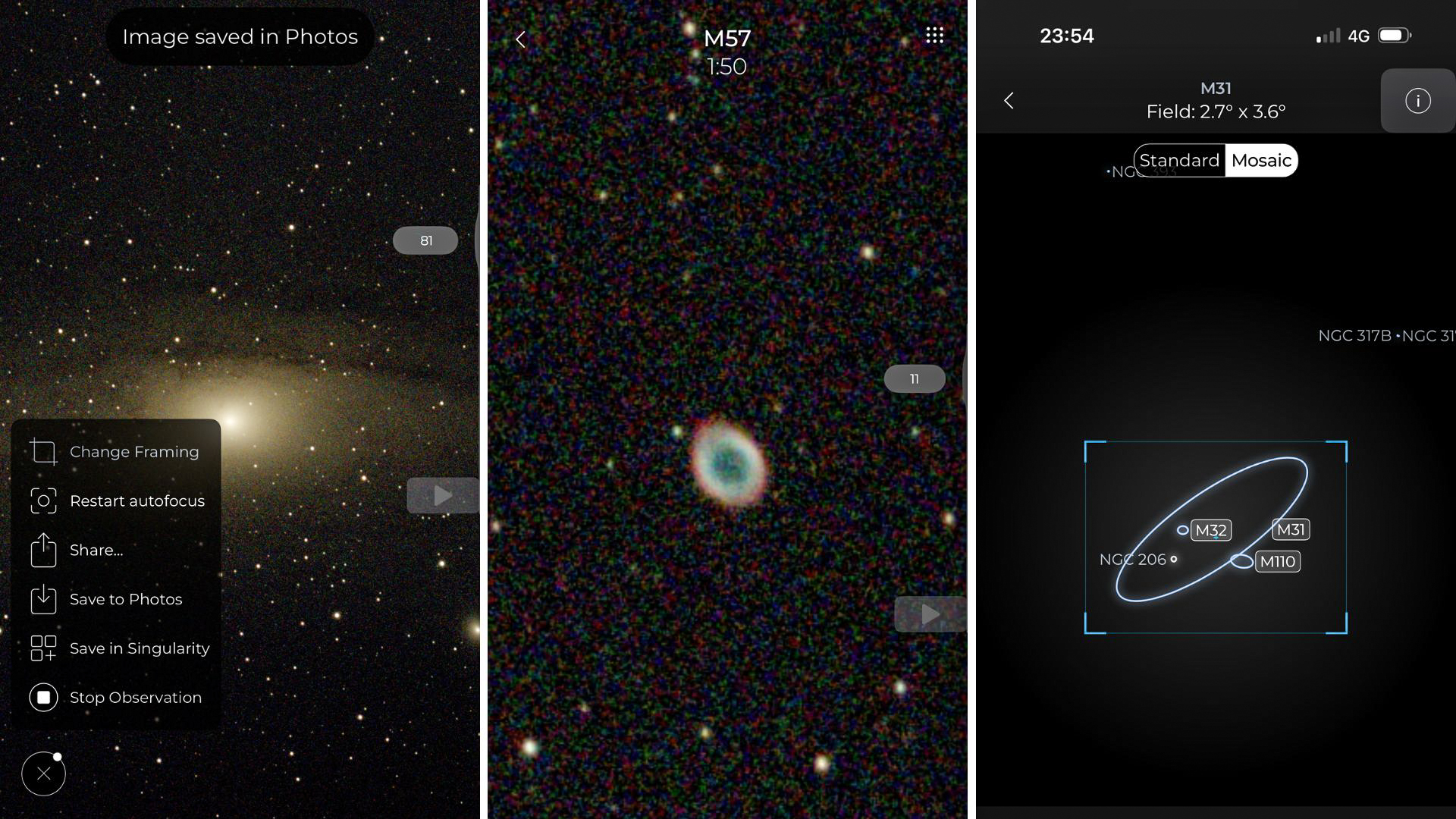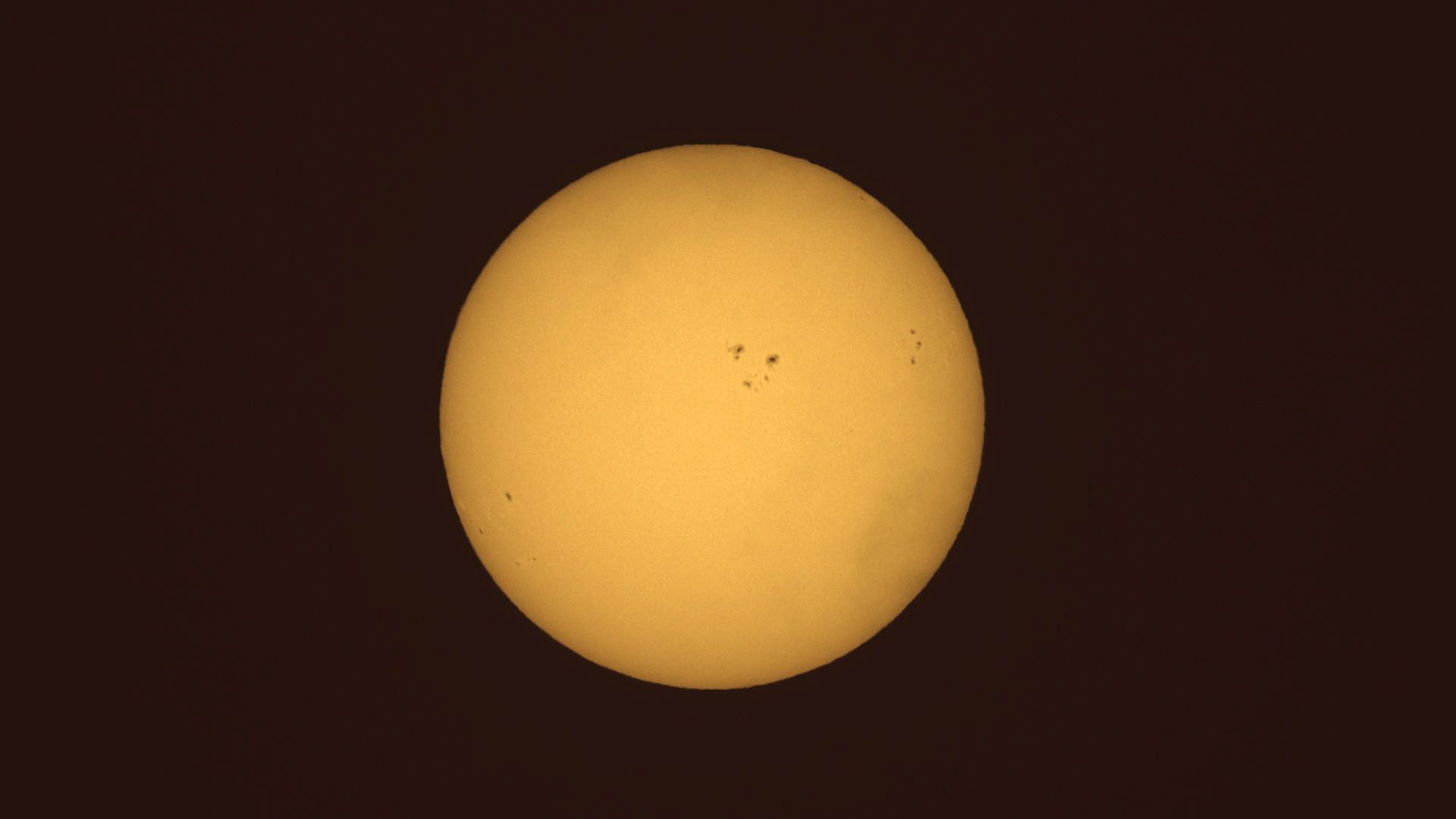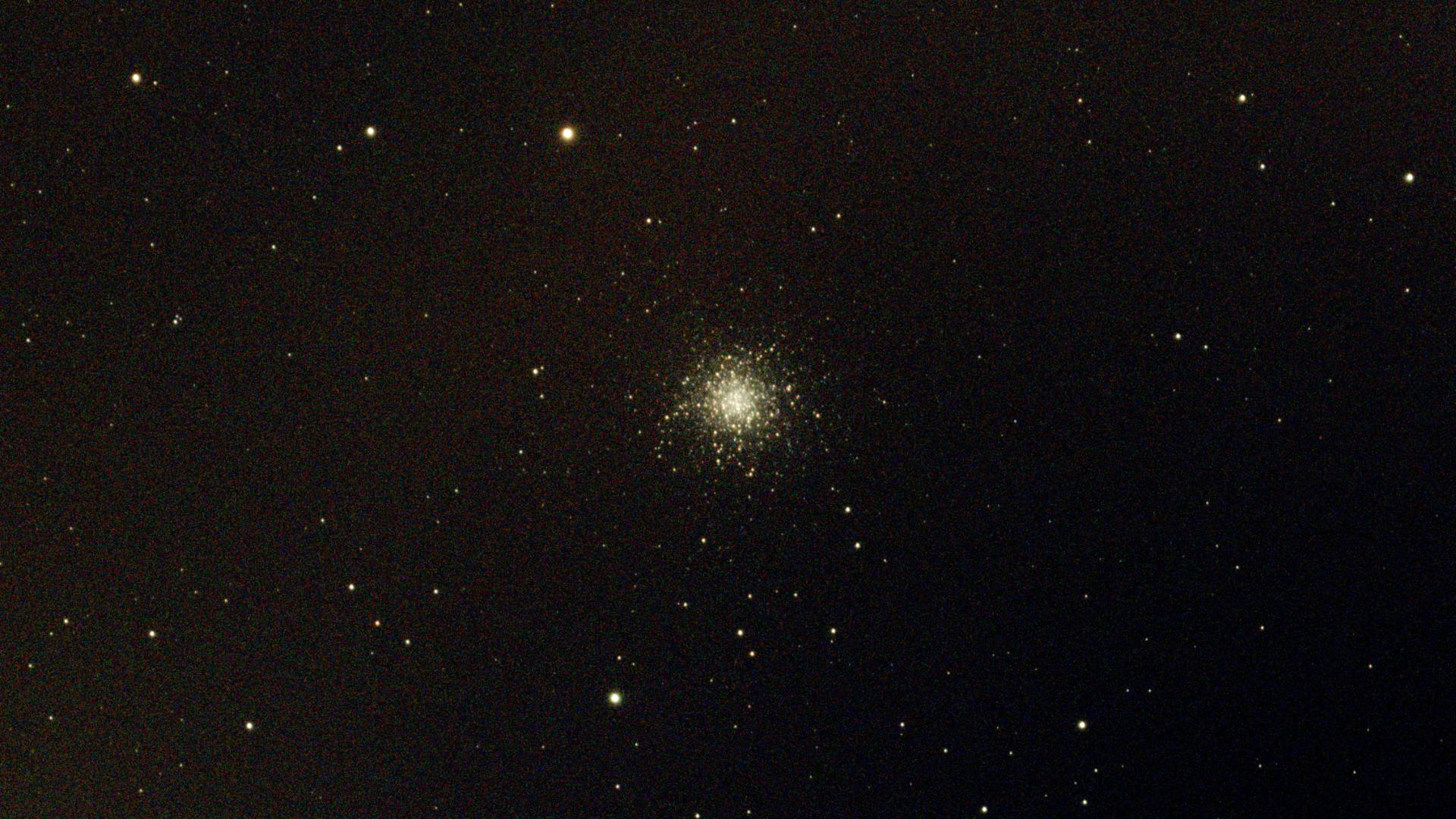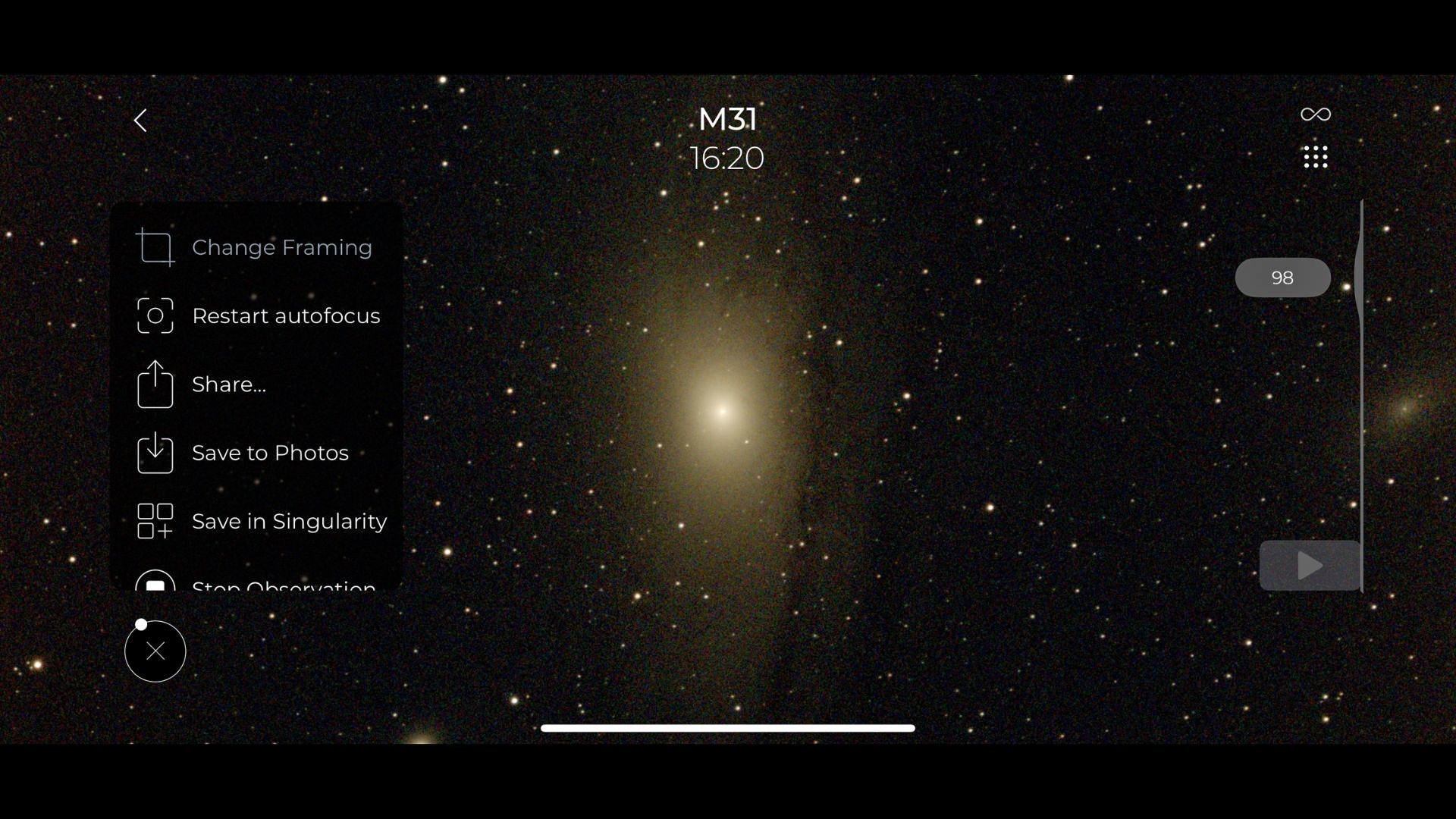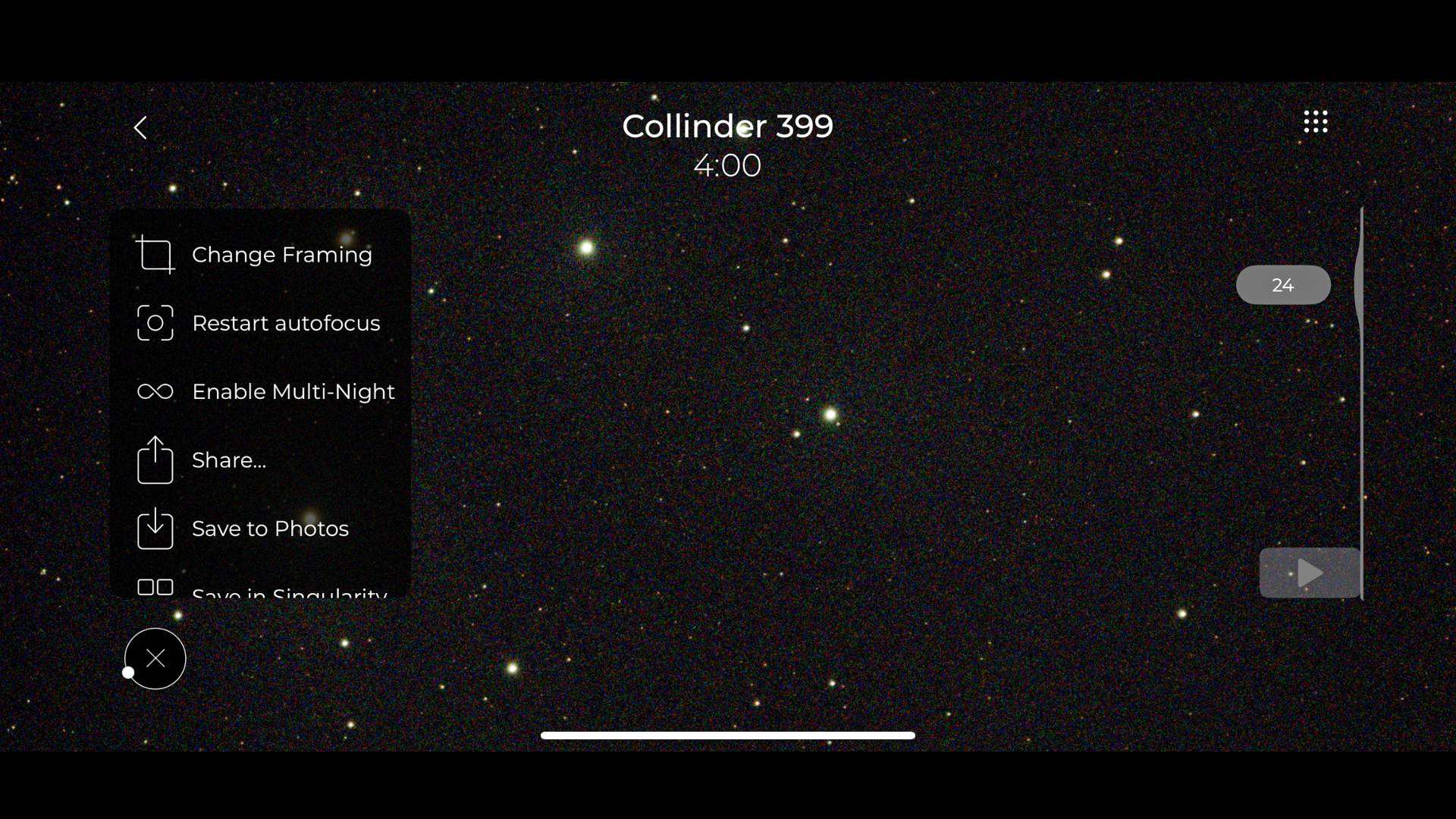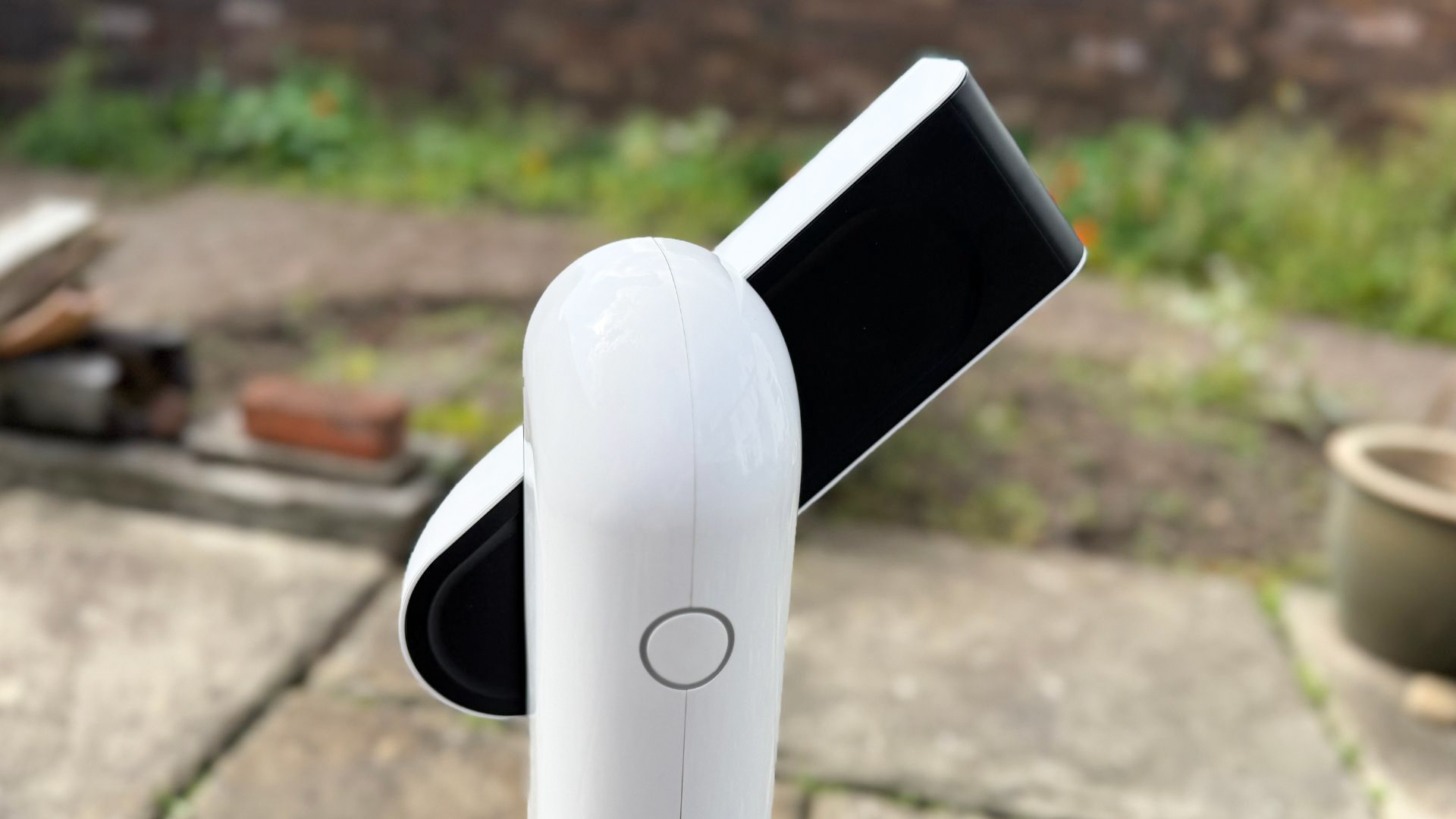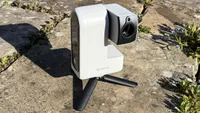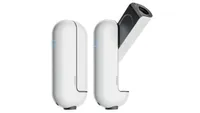Digital Camera World Verdict
The Vaonis Vespera Pro is a smart telescope that strips away the complexity of astrophotography. It’s expensive, and planets underwhelm, but for galaxies, nebulae, the moon and the sun, it offers an effortless, rewarding observing experience even under light-polluted night skies.
Pros
- +
Copes well with light pollution
- +
Innovative CovalENS mode
- +
Compact and portable
- +
Quick to set up and use
Cons
- -
Expensive
- -
Accessories cost extra
- -
Included tripod is small
- -
Poor with planets
Why you can trust Digital Camera World
The best smart telescopes have come a long way in the past five years, evolving from curious gadgets into serious astrophotography tools. The Vaonis Vespera Pro sits in the middle of this new class of automated instruments, promising deep-sky astrophotography without the bulk, complexity or set-up time of traditional gear. Designed in France and fairly portable — though significantly heavier than budget smart telescopes — the Vespera Pro targets those who want to capture galaxies, nebulae, clusters, the sun and the moon with minimal fuss.
It’s essentially an upgrade on Vaonis’ previous Vespera smart telescopes. Built around the same 50 mm f/5 quadruplet refractor optics, here it pairs them with a higher-resolution Sony IMX676 sensor, a massive boost in onboard storage, and a battery capable of running all night.
Like its siblings, it’s controlled entirely through the ever-evolving Singularity app, which handles alignment, focusing, and tracking automatically, and now offers advanced tools like CovalENS mosaics, multi-night stacking, manual exposure control, master dark calibration and planning features that make observing and capturing the cosmos easier than ever.
However, the Vespera Pro is a significant investment over the capable and cheaper Vaonis Vespera II. Is it worth it? Here’s everything you need to know about the Vaonis Vespera Pro.
Vaonis Vespera Pro: Specifications
| Optical design | Apochromatic quadruple lens refractor |
| Focal length | 250mm/9.84 inches |
| Focal ratio | f/5 |
| Field of view | 1.6 x 1.6 degrees/2.6 x 2.6 (CovalENS) |
| Sensor | Sony IMX 676 |
| Resolution | 3536 x 3536 pixels (12.5MP). Upto 50MP with CovalENS. |
| Mount type | Alt-azimuth |
| Battery life | 11 hours |
| Weight | 5 kg/11 lbs |
| Accessories | Lens cap, mini-tripod, bubble level |
Vaonis Vespera Pro: Price & accessories
Vaonis smart telescopes are not cheap — and nor are their accessories. The Vespera Pro costs US$2,990 / £2,499 / AU$4,579, which puts it in the mid-range of smart telescopes along with the Unistellar Odyssey.
Far below it in terms of cost are the likes of the SeeStar S30, ZWO Seestar S50 and the DwarfLab Dwarf 3, while above are Unistellar’s Odyssey Pro, eVscope eQuinox II and eVscope II, and the Celestron Origin.
There are three filters available; a solar filter (for observing the sun) sells for $215/ £159 / AU$330, a dual band filter (for nebulae) goes for $500/ £370 / AU$769 and a CLS filter (designed to reduce the glow from light pollution) on the market for $297/ £219 / AU$455.
The best camera deals, reviews, product advice, and unmissable photography news, direct to your inbox!
All but the solar filter are included in a “filter bundle” package with the Vespera Pro, which sells for $3,618/ £3,088/ AU$5,540. A package available in the US adds just the solar filter and sells for US$3,169. A custom-made padded backpack for the Vespera Pro is sold for $215 / £159 / AU$330.
Vaonis Vespera Pro: Build and handling
Like a lot of smart telescopes, the Vespera Pro has sleek, curved, minimalist styling very much in the Apple aesthetic. The glossy, sculpted chassis is clean, with just an on/off switch on display, with a USB-C slot hidden on the undercarriage.
At just under 5kg with its small, extendable tripod, it’s light enough to carry into the garden or pack in the car, yet solid enough to feel stable during operation. Would we hike with it into the wilds? Probably not, but the included hard-shell carry case that protects the optics during travel is ideal for a camping or campervan trip.
Although the tripod is compact, quick to deploy, and stable, it demands a wide-open sky. When used in an urban setting, it’s likely that a larger tripod will give it a better view of some objects. Either way, it needs stabilising. There’s a bubble level that sits between the Vespera Pro and the tripod for just that purpose.
Set-up is simple. Press the power button, wait for the Wi-Fi signal, connect a phone or tablet, then launch the free Singularity app. From there, the scope handles the rest — alignment, focusing, target acquisition — in a matter of minutes (unless there’s cloud, which can slow or cancel the process). The app’s interface is clean and intuitive for first-timers, but also hides advanced modes for experienced users: mosaics, multi-night sequences, manual gain/exposure and even master dark calibration (the app simply requests you put the lens cap on at the end of the night while it shoots a quick dark frame).
Although it can take a little time to plate-solve the stars and figure out where it is and where the target object is, once it’s settled, it slews quietly and accurately.
Vaonis Vespera Pro: Performance
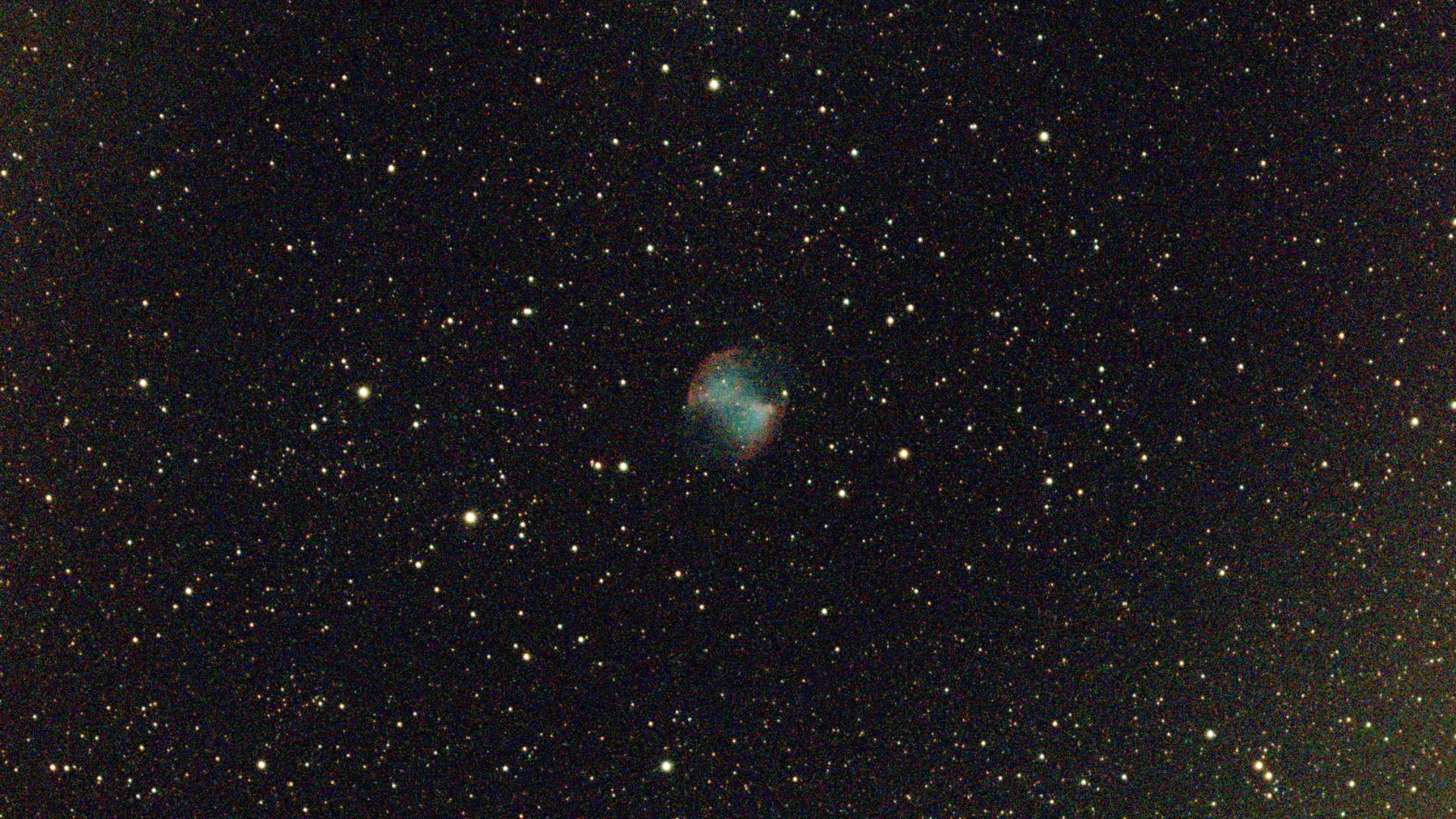
Like most smart telescopes, the Vespera Pro is built for exploring and imaging the deep sky. Using an alt-azimuth mount to find its targets, its optics and sensor shoot and stack 10-second exposures to bring star clusters, galaxies and faint nebulae into view. Crucially, it does all this from light-polluted urban skies.
Its view of a 1.6 x 1.6 degree portion of the night sky is typically ample, but doesn’t quite fit in larger objects, such as the Andromeda Galaxy. Cue CovalENS mosaics to expand the field to 2.6 x 2.6 degrees.
In practice, more useful is the option to build multi-night stacks, effectively meaning the user can study objects at different times and under different sky conditions to create an ever-improving image over time.
The Vespera Pro can therefore be taken on trips to dark skies to add some better data to an existing image of, say, a faint nebula. It’s worth saying that the additional filters, particularly the dual-band filter (which selects wavelengths of Hydrogen Alpha (H-alpha) and Oxygen III (O-III) to increase contrast), work well.
However, the first filter to invest in is the solar filter, which allows some excellent white-light images of sunspots and solar eclipses. Lunar images are equally impressive (and require no filter). However impressive solar and lunar images are, what you see is what you get — they can only be saved as JPEGs.
As with all smart telescopes, planets don’t impress, with the Vesper Pro’s 250mm focal length just not suited, though with manual gain and exposure control, Jupiter, particularly, can be attempted.
Is the Vespera Pro better than the Vespera II? Both share the same aperture, so light-gathering is identical, though the Vespera Pro’s smaller pixels mean a finer resolution. The downside is slower image acquisition. There are other differences — such as battery life and storage — but the decision will come down to price — the Vespera II is about half the cost, but offers more or less the same experience for beginners.
Vaonis Vespera Pro: Verdict
The Vespera Pro is a premium smart telescope that solves the biggest barrier to deep-sky astrophotography – time. There’s no set-up beyond placing it on its tripod, no complex alignment and no delays. The Singularity app works well, images impress, and there’s a near-constant addition of new features and more advanced image processing.
For those after maximum resolution, storage, and battery life, the Vespera Pro is a worthy upgrade on the lower-cost Vespera II, though beginners will likely not notice much difference. For those with more time, money, patience, and processing know-how, a traditional astrophotography rig will still outperform either, but if time, portability and ease of use are imperative, the Vaonis Vespera Pro is a fine choice of smart telescope.
| Features | Auto-aligns, with advanced features like CovalENS mosaics, multi-night observations, manual controls, and frequent updates that bring new features. | ★★★★☆ |
| Design | Elegant, compact, portable and premium, with clip-on filters and a handy flight case for maximum protection when traveling. | ★★★★★ |
| Performance | Easy to use and with an excellent app, quick set-up and clear, colorful deep-sky, solar and lunar images. | ★★★★☆ |
| Value | The Vespera Pro is perfect for those after a premium product with higher resolution, but for beginners, it’s significantly more expensive than lower-resolution rivals. | ★★★☆☆ |
Alternatives
ZWO SeeStar S30
A slightly smaller, lighter and more portable smart telescope with a smaller aperture, which sells for a much lower price.
Vaonis Vespera 2
Aside from its chipset, storage and battery life, it’s near-identical to the Vespera Pro.
Also see our guide to the best smart telescopes

Jamie has been writing about photography, astronomy, astro-tourism and astrophotography for over 15 years, producing content for Forbes, Space.com, Live Science, Techradar, T3, BBC Wildlife, Science Focus, Sky & Telescope, BBC Sky At Night, South China Morning Post, The Guardian, The Telegraph and Travel+Leisure.
As the editor for When Is The Next Eclipse, he has a wealth of experience, expertise and enthusiasm for astrophotography, from capturing the moon and meteor showers to solar and lunar eclipses.
He also brings a great deal of knowledge on action cameras, 360 cameras, AI cameras, camera backpacks, telescopes, gimbals, tripods and all manner of photography equipment.
You must confirm your public display name before commenting
Please logout and then login again, you will then be prompted to enter your display name.

